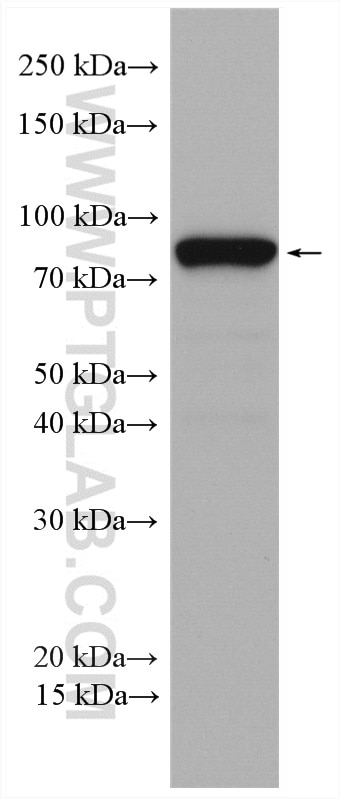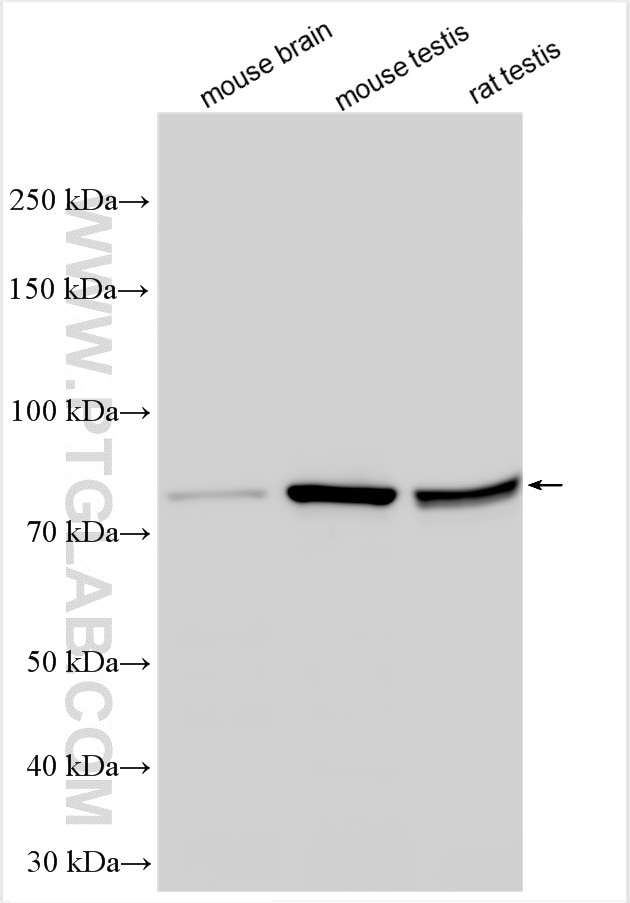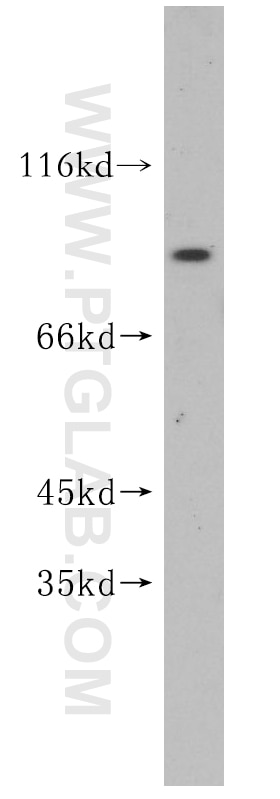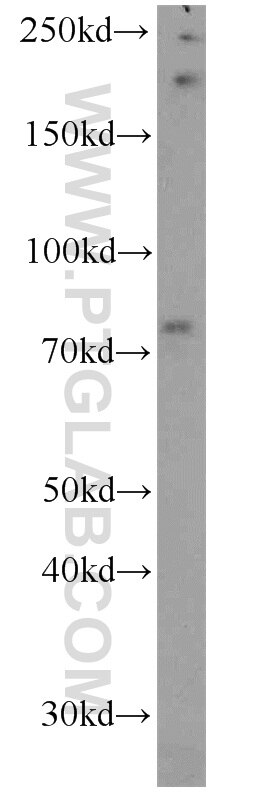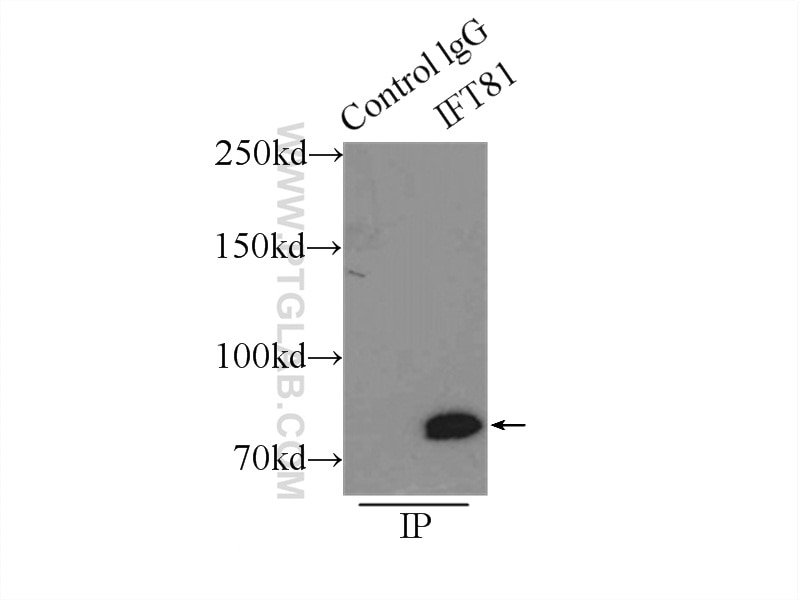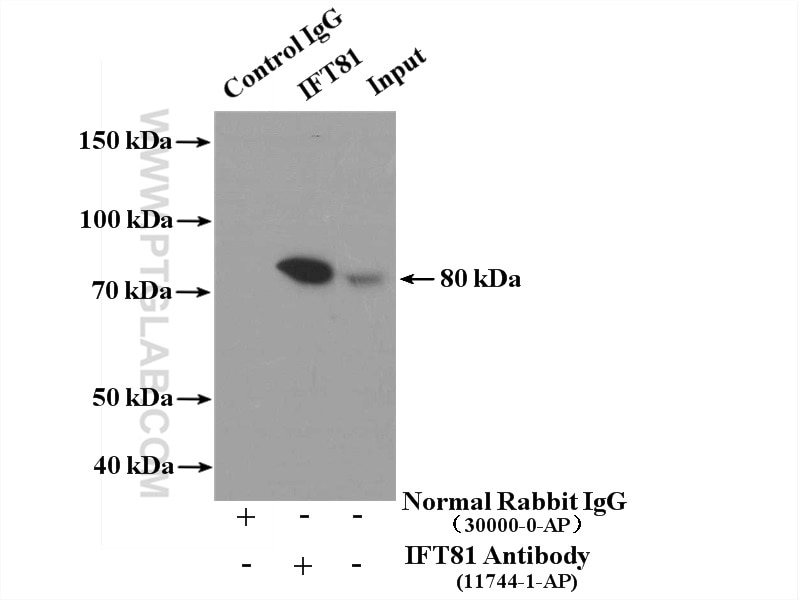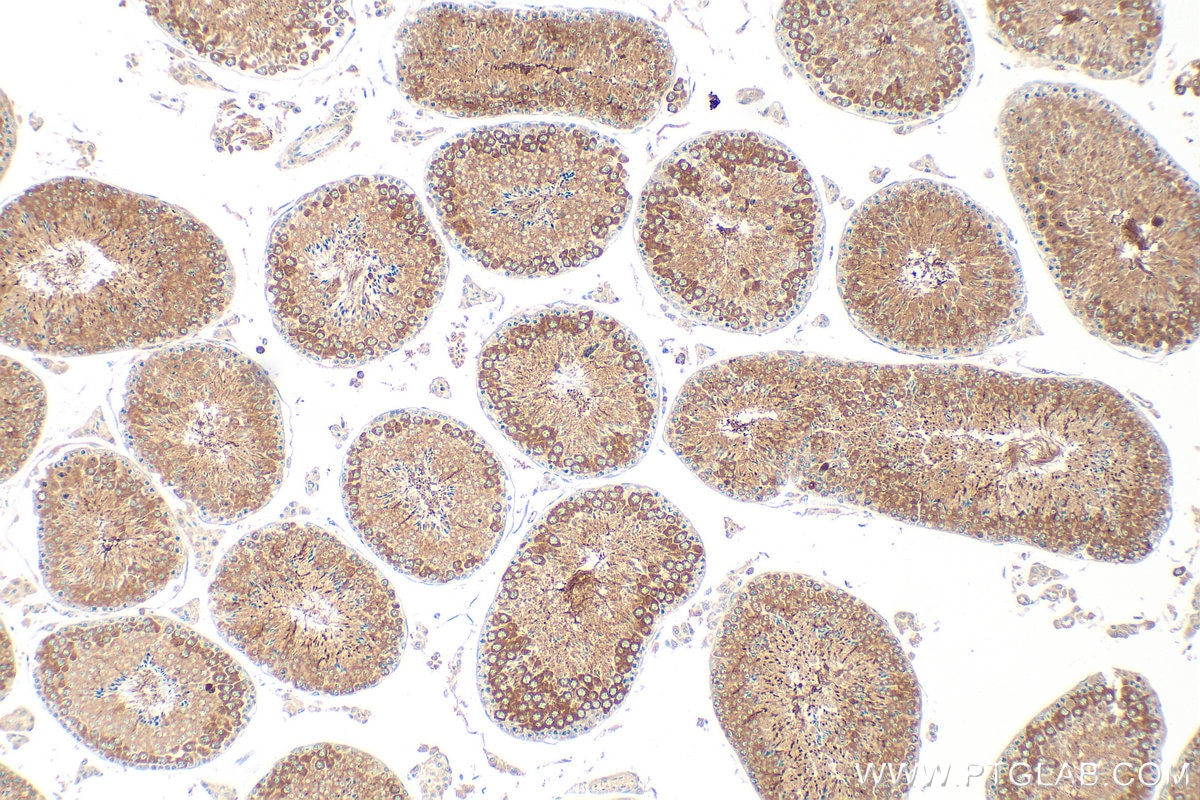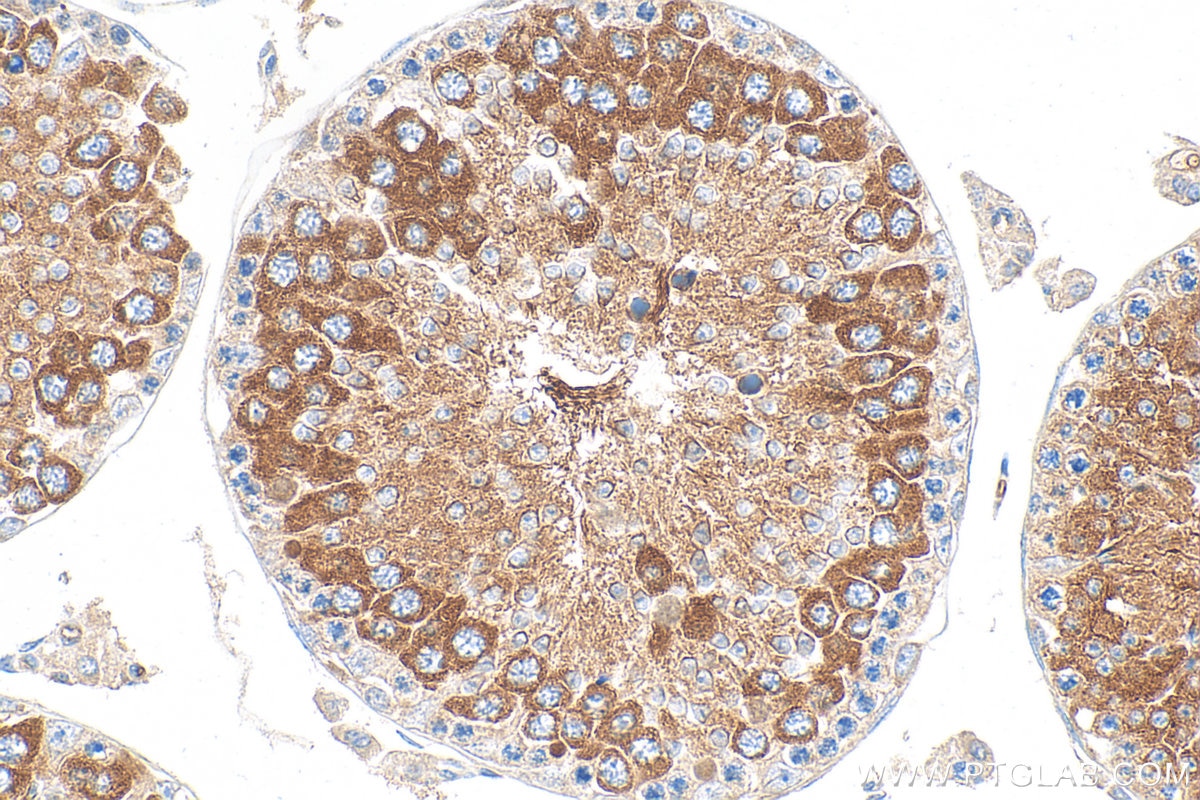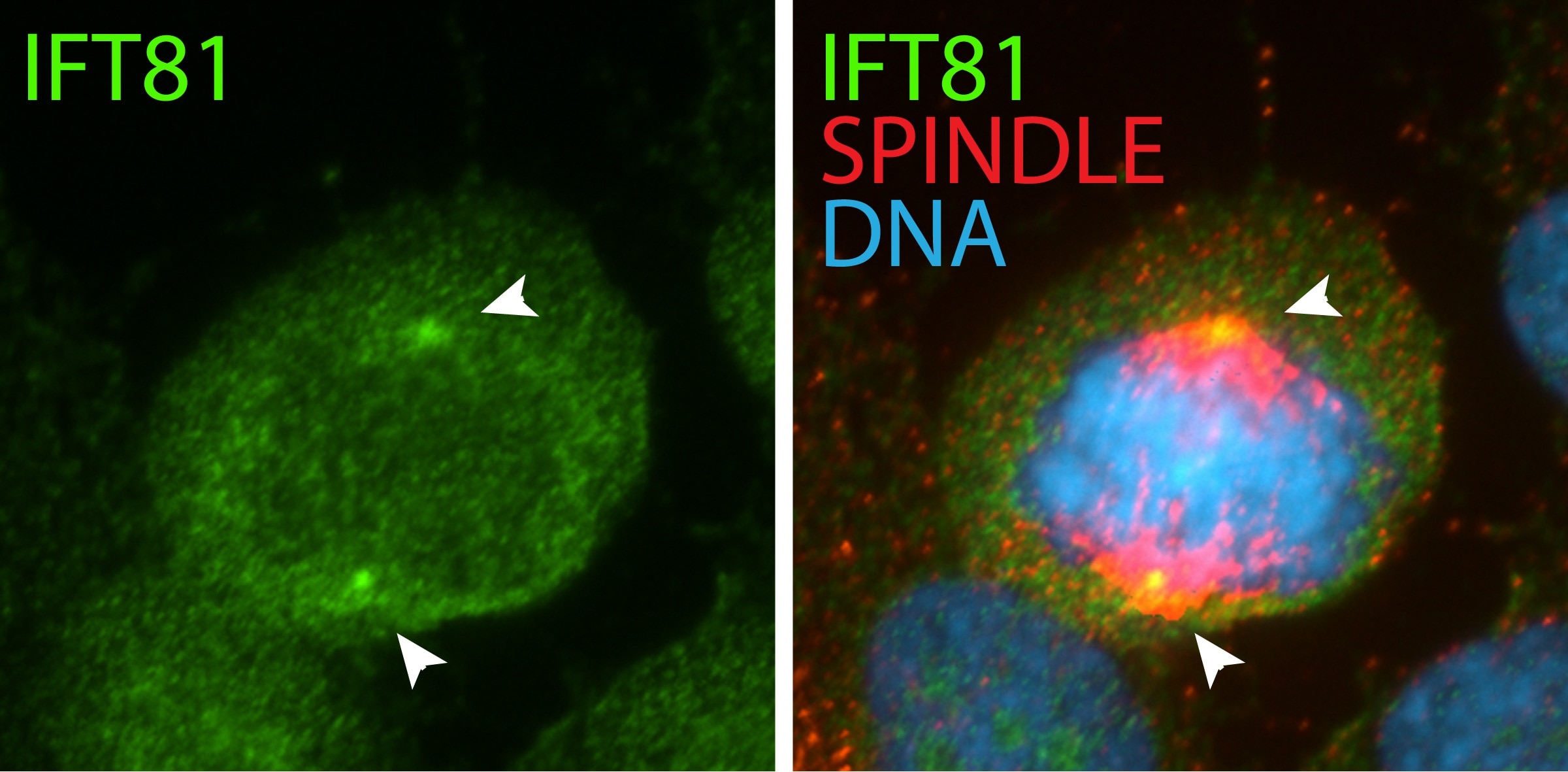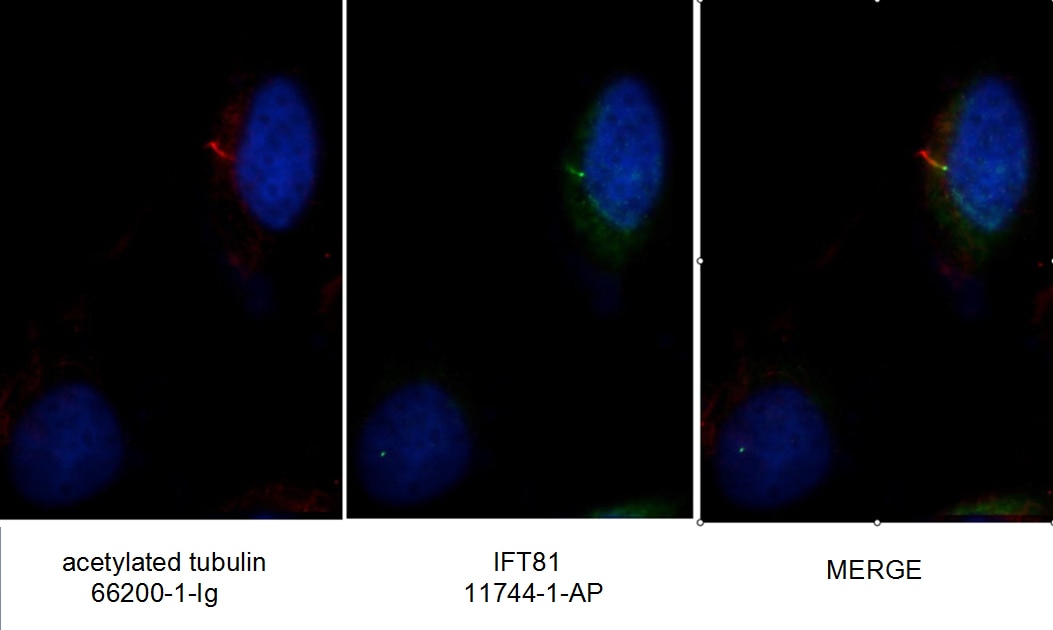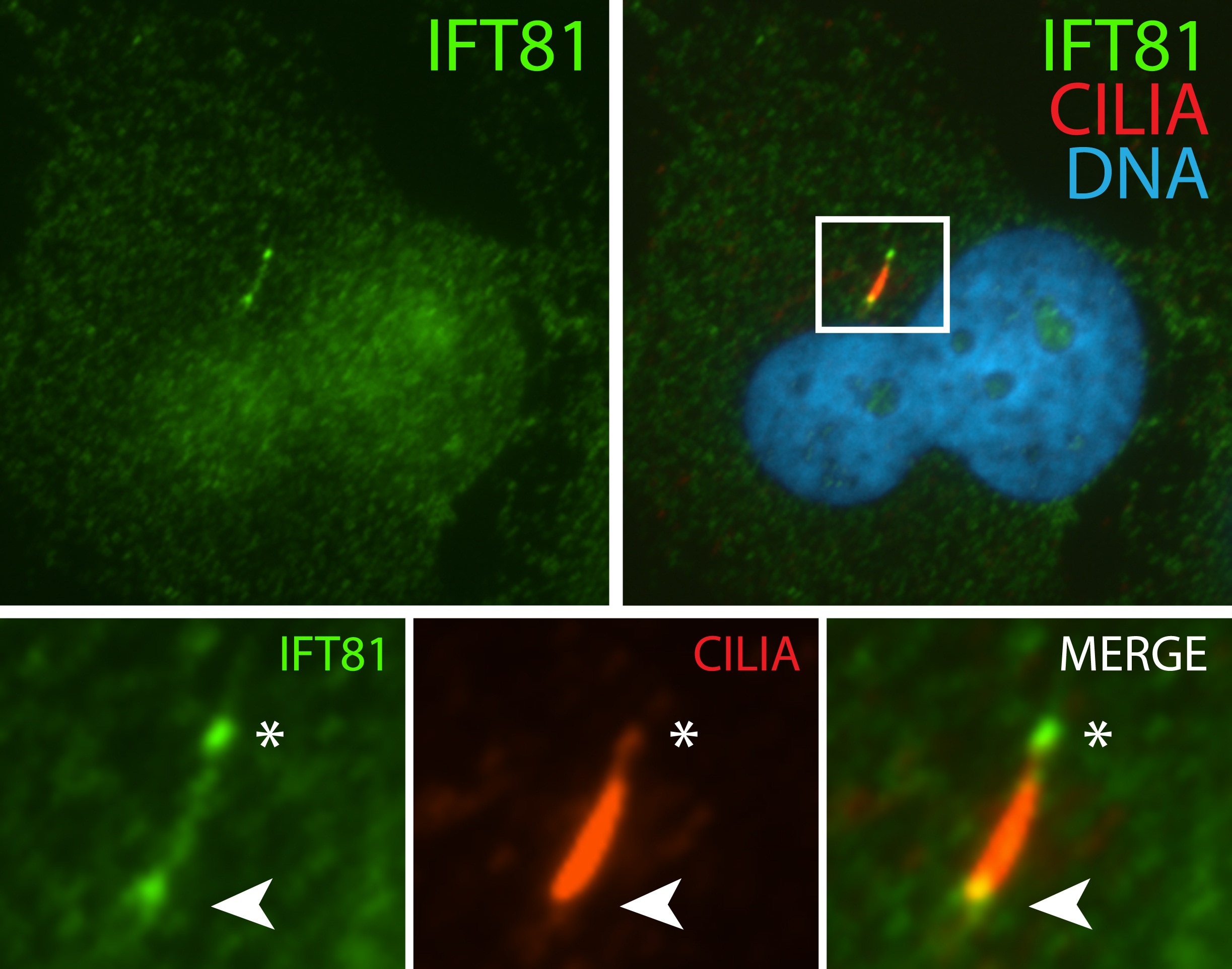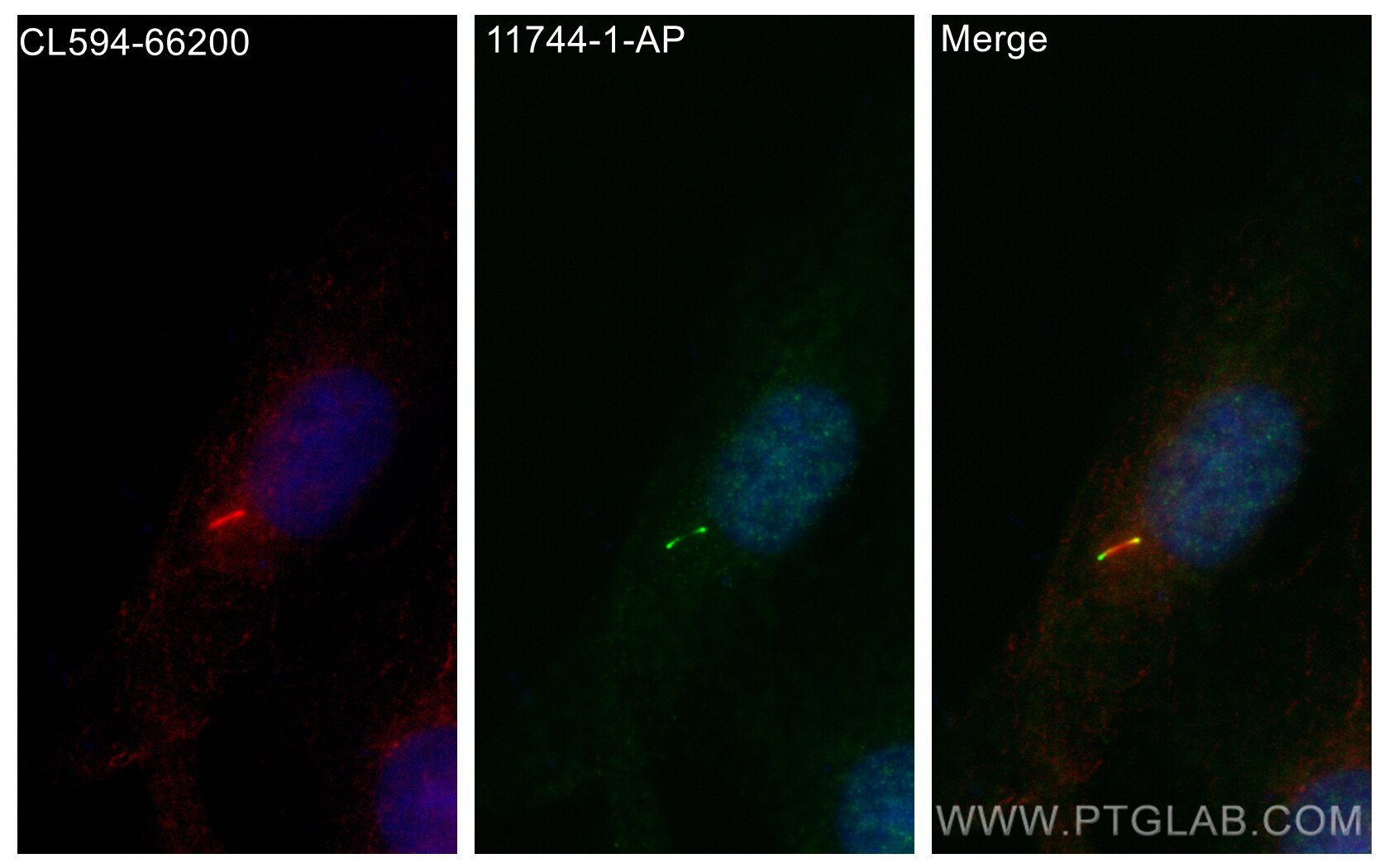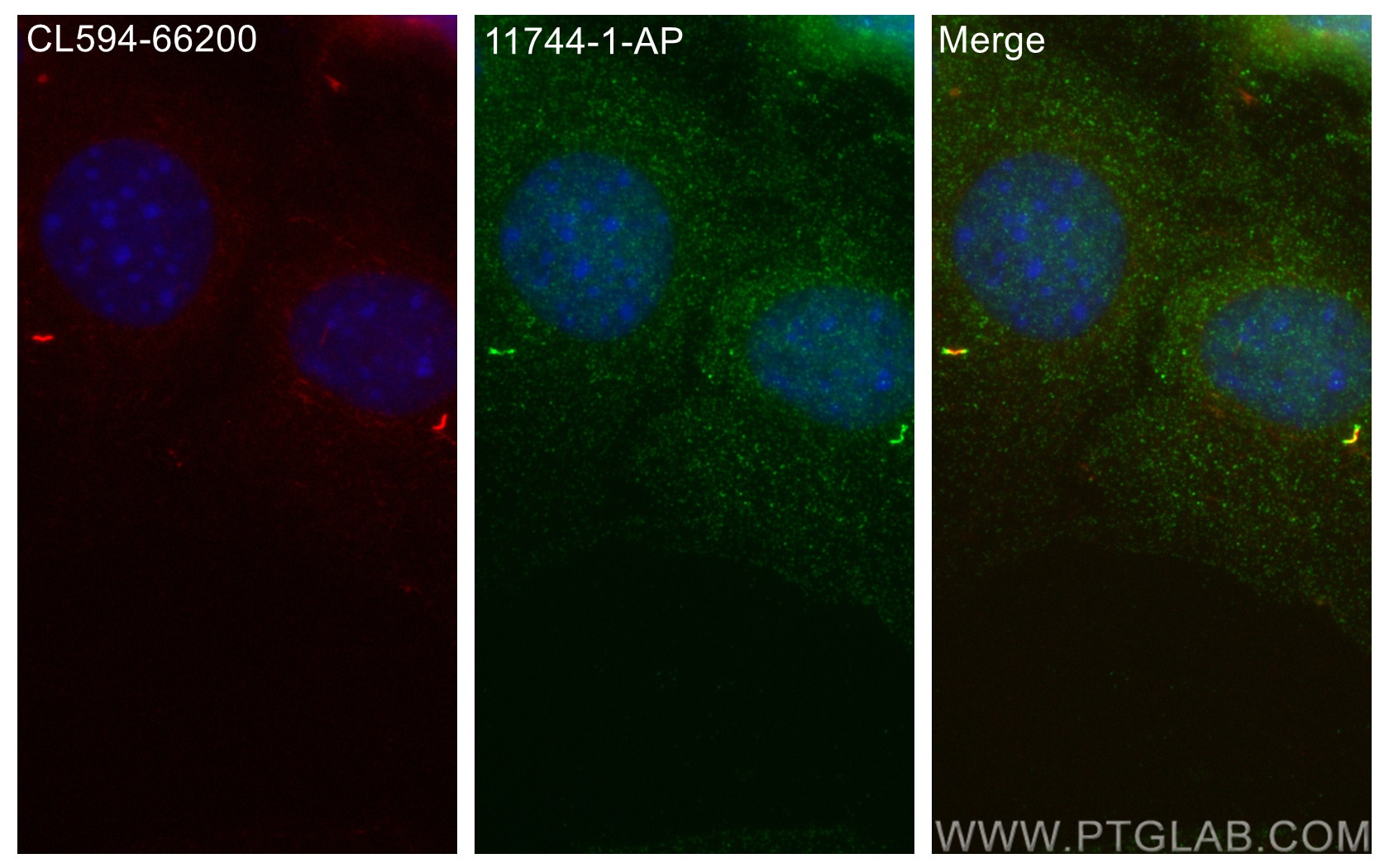Tested Applications
| Positive WB detected in | mouse brain tissue, mouse testis tissue, HEK-293 cells, human brain tissue, rat testis tissue |
| Positive IP detected in | mouse brain tissue |
| Positive IHC detected in | mouse testis tissue Note: suggested antigen retrieval with TE buffer pH 9.0; (*) Alternatively, antigen retrieval may be performed with citrate buffer pH 6.0 |
| Positive IF/ICC detected in | C2C12 cells, hTERT-RPE1 cells, MDCK cells |
Recommended dilution
| Application | Dilution |
|---|---|
| Western Blot (WB) | WB : 1:1000-1:8000 |
| Immunoprecipitation (IP) | IP : 0.5-4.0 ug for 1.0-3.0 mg of total protein lysate |
| Immunohistochemistry (IHC) | IHC : 1:50-1:500 |
| Immunofluorescence (IF)/ICC | IF/ICC : 1:50-1:500 |
| It is recommended that this reagent should be titrated in each testing system to obtain optimal results. | |
| Sample-dependent, Check data in validation data gallery. | |
Published Applications
| KD/KO | See 1 publications below |
| WB | See 26 publications below |
| IHC | See 1 publications below |
| IF | See 34 publications below |
| CoIP | See 1 publications below |
Product Information
11744-1-AP targets IFT81 in WB, IHC, IF/ICC, IP, CoIP, ELISA applications and shows reactivity with human, mouse, rat, canine samples.
| Tested Reactivity | human, mouse, rat, canine |
| Cited Reactivity | human, mouse, rat |
| Host / Isotype | Rabbit / IgG |
| Class | Polyclonal |
| Type | Antibody |
| Immunogen | IFT81 fusion protein Ag2339 Predict reactive species |
| Full Name | intraflagellar transport 81 homolog (Chlamydomonas) |
| Calculated Molecular Weight | 676 aa, 80 kDa |
| Observed Molecular Weight | 75-80 kDa |
| GenBank Accession Number | BC029349 |
| Gene Symbol | IFT81 |
| Gene ID (NCBI) | 28981 |
| RRID | AB_2121966 |
| Conjugate | Unconjugated |
| Form | Liquid |
| Purification Method | Antigen affinity purification |
| UNIPROT ID | Q8WYA0 |
| Storage Buffer | PBS with 0.02% sodium azide and 50% glycerol, pH 7.3. |
| Storage Conditions | Store at -20°C. Stable for one year after shipment. Aliquoting is unnecessary for -20oC storage. 20ul sizes contain 0.1% BSA. |
Background Information
Intraflagellar transport (IFT), mediated by molecular motors and IFT particles, is an important transport process that occurs in the cilium and has been shown to be essential for the assembly and maintenance of cilia and flagella in many organisms. IFT particles are multi-subunit complexes of proteins that functions to move non-membrane-bound particles from the cell body to the tip of cilium or flagellum, then return them to the cell body. Transport towards the ciliary tip is regulated by the IFT complex B (IFT-B), consisting of at least 15 IFT proteins, in association with kinesin motors, whereas transport from the ciliary tip back to the base is executed by a dynein motor in association with the IFT complex A (IFT-A), currently known to be composed of six IFT proteins. IFT81 is a subunit of IFT complex B.It may play a role in development of the testis and spermatogenesis. There are some isoforms of IFT81 with 73-78 kDa and 43-50 kDa.
Protocols
| Product Specific Protocols | |
|---|---|
| WB protocol for IFT81 antibody 11744-1-AP | Download protocol |
| IHC protocol for IFT81 antibody 11744-1-AP | Download protocol |
| IF protocol for IFT81 antibody 11744-1-AP | Download protocol |
| IP protocol for IFT81 antibody 11744-1-AP | Download protocol |
| Standard Protocols | |
|---|---|
| Click here to view our Standard Protocols |
Publications
| Species | Application | Title |
|---|---|---|
Cell Dynamic Remodeling of Membrane Composition Drives Cell Cycle through Primary Cilia Excision. | ||
Nat Cell Biol The kinesin-4 protein Kif7 regulates mammalian Hedgehog signalling by organizing the cilium tip compartment. | ||
Nat Cell Biol Systematic proteomics of the VCP-UBXD adaptor network identifies a role for UBXN10 in regulating ciliogenesis. | ||
Nat Commun IFT proteins spatially control the geometry of cleavage furrow ingression and lumen positioning. | ||
Nat Commun Cilia locally synthesize proteins to sustain their ultrastructure and functions. | ||
EMBO J Rabl2 GTP hydrolysis licenses BBSome-mediated export to fine-tune ciliary signaling. |
